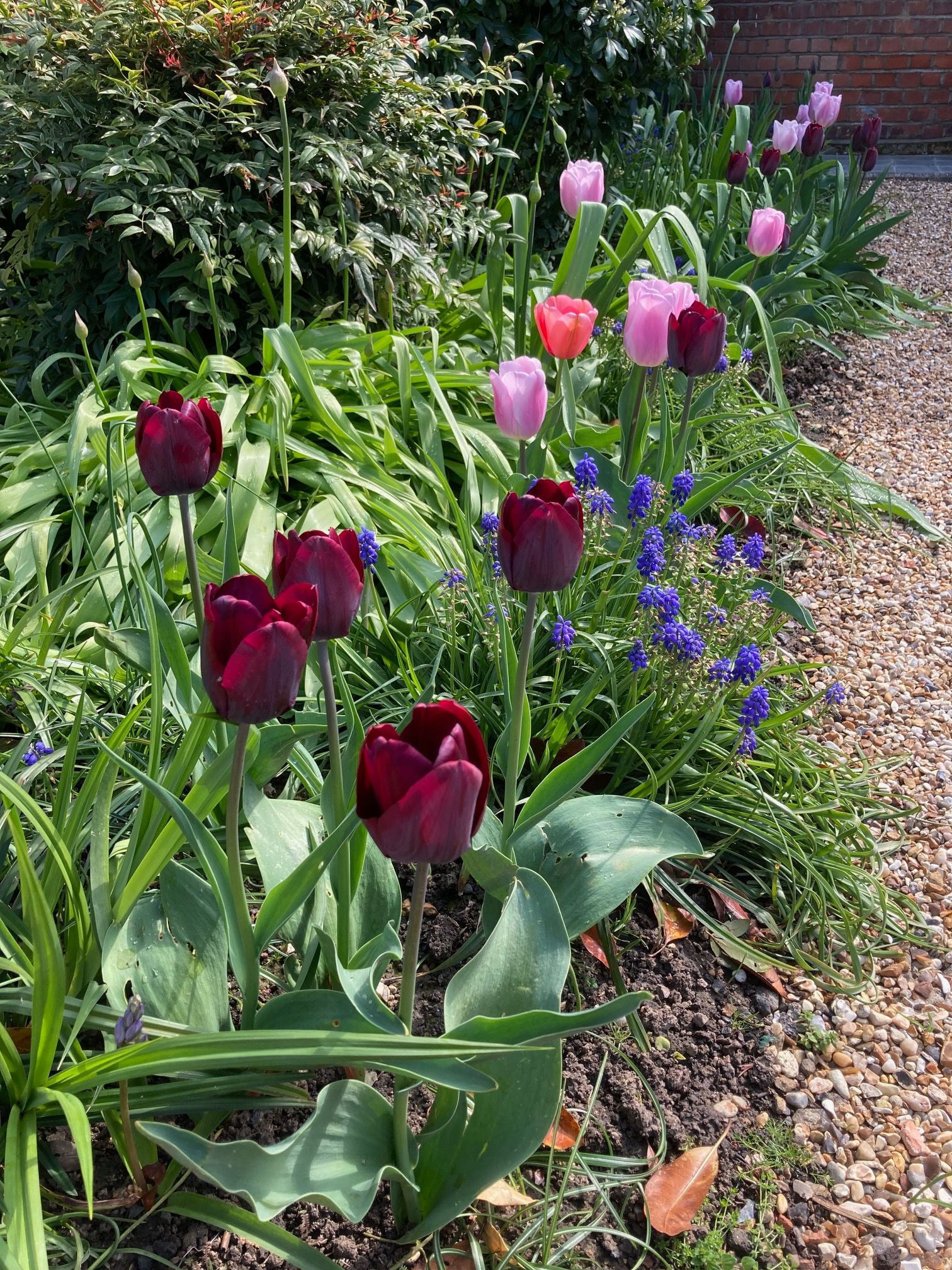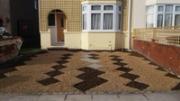
The permeable driveway they created has a lot of plants, plus pea shingle that is durable and lets rainfall percolate through. It's a design that can be widely adopted.
Juliet writes:
Our front garden full of roses was a source of great joy to us, so when we got our electric car, I was pretty upset that the flowers would have to go simply because the car had to be charged. We’ve always been against block paving, as it is not nice if used in excessive quantity and causes ecological problems.
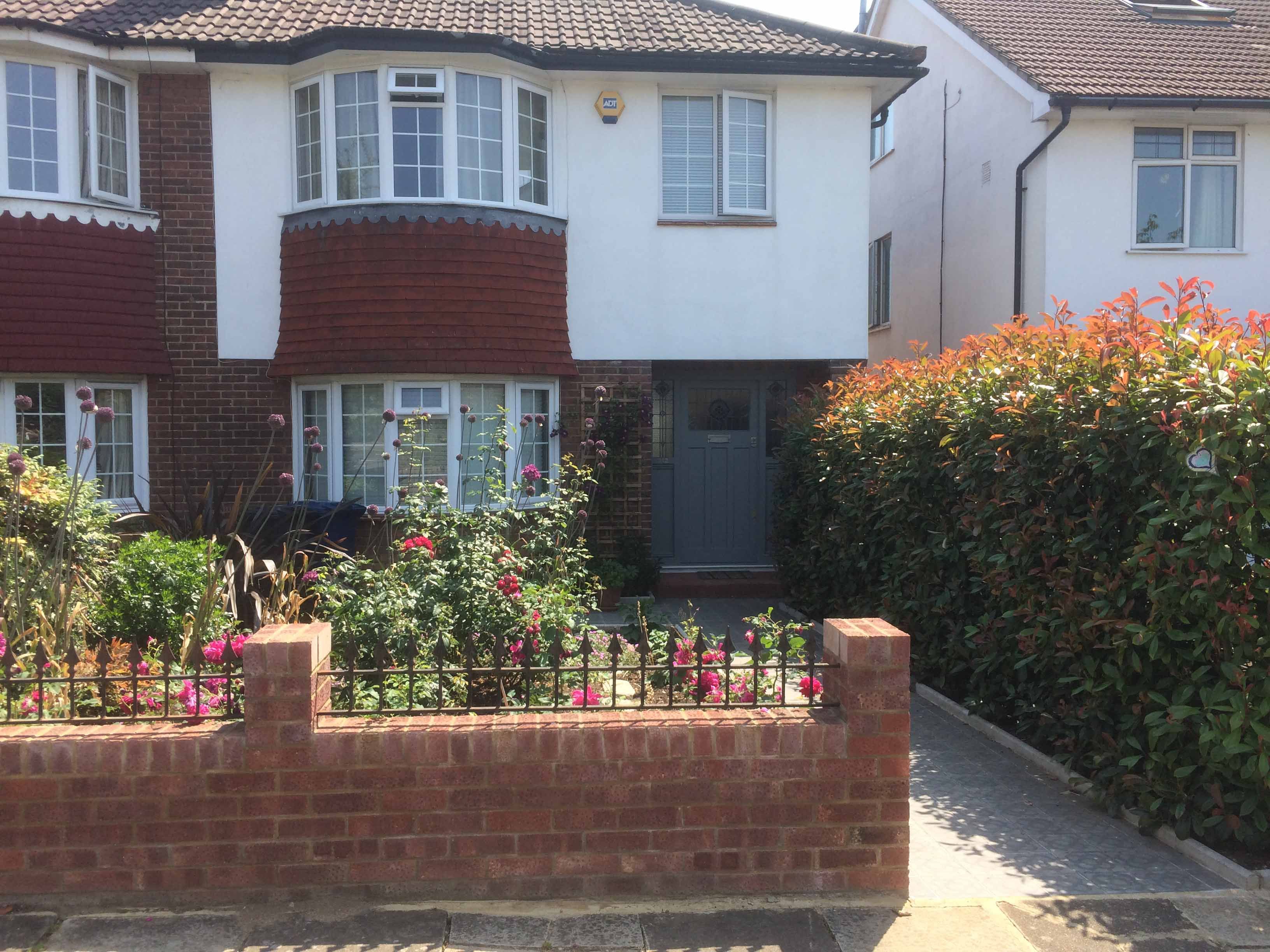
In fact, when we bought the house, it originally had a concrete slab driveway, which we spent a considerable sum taking out.
Several years on, I phoned up the contractors we’d used to break up that concrete to say “You know the front garden you helped us create, well it’s coming out”.
My husband and I did a lot of research into a solution. We found technical advice in Guidance on Permeable Surfacing of Front Gardens, a document on our local council’s (Ealing) website. Our aim was to keep as many of the existing features as we could including our evergreen shrubs Choisya ternata, Nandina and Japanese quince. The Photinia ‘Red Robin’ hedge was retained as well as some Spanish porcelain tiles.
It was fortunate we had in mind that our garden might be needed for a car at a future date, so we’d designed the space to be easily updated. To create an eco drive, we would need to remove planting in the central area, dig up the soil, add shingled strips for the car’s tyres, cut back the brick wall, resize an iron railing and fix a new pillar.

We repurposed plants by giving them to neighbours and rose bushes were moved to a community garden. It was hard work transplanting so many well-established shrubs, but by the time the contractor came a 2m by 6m section had been cleared.
The contractors interpreted our design very well. They brought in machinery to remove soil, filled the space with Type 1 crushed stone, where the wheels of the vehicle would go, compacted it and overlaid each 600mm-wide area with strong plastic mesh. These strips were edged with mortar otherwise the surface would not have supported the car.
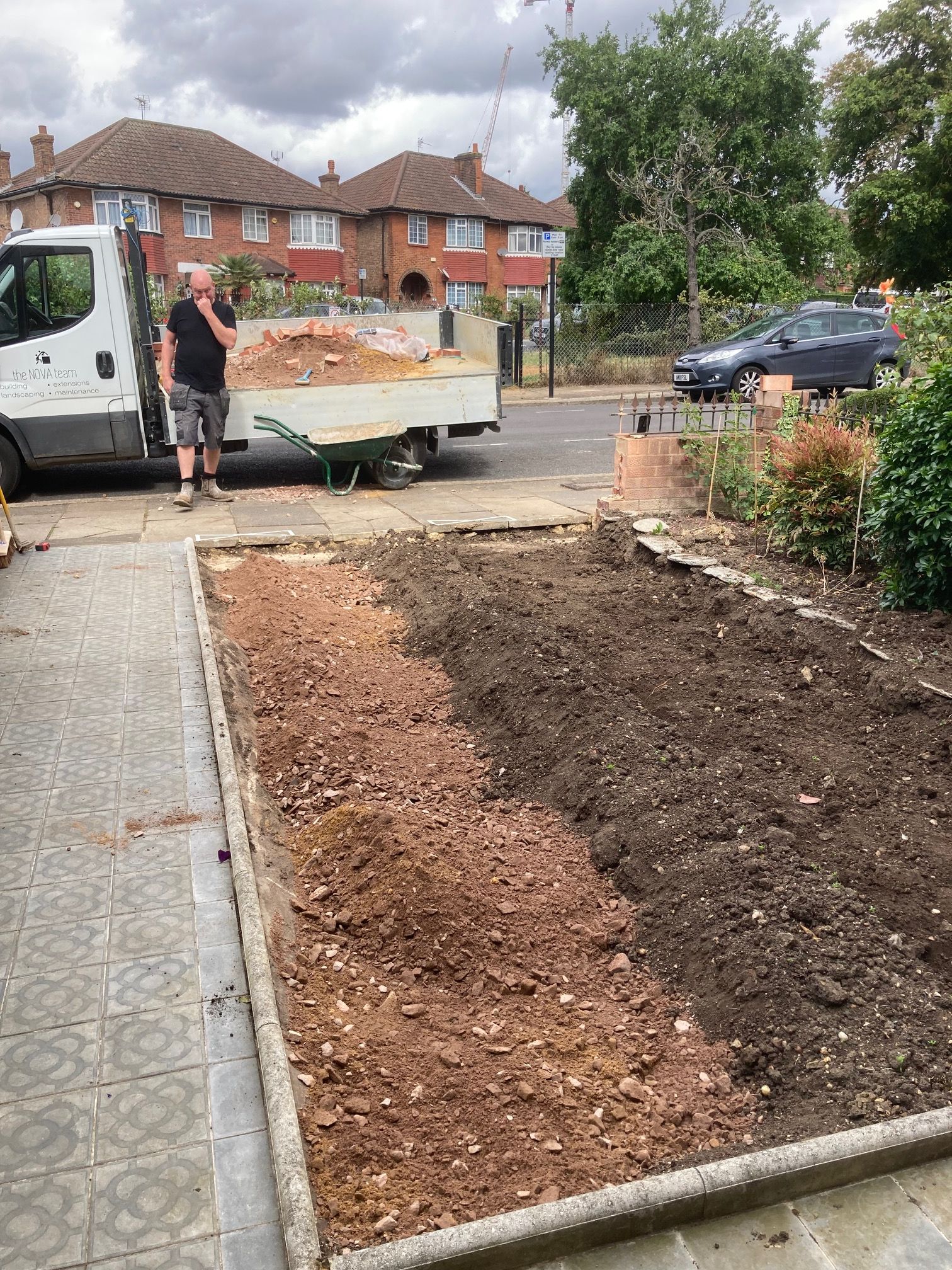
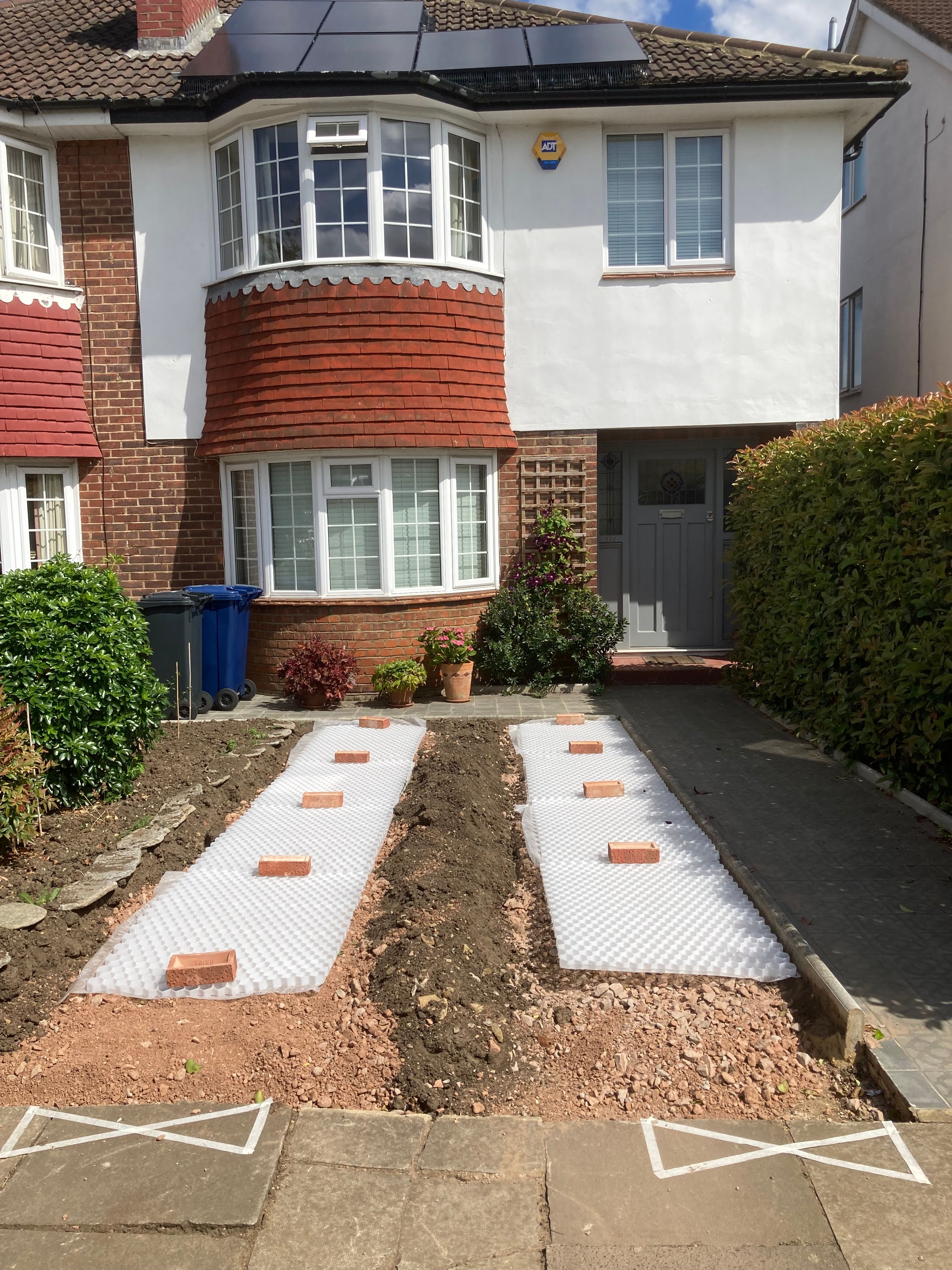
Once this had set, pea shingles were poured over, creating a natural, permeable surface.
We also applied to Ealing Council for a vehicle crossover to the road. We’d found out that a dropped kerb is only granted by the council when a driveway is finished and meets criteria for drainage. With so little hardstanding, we had no worries about flooding.

The council also required us to have a row of bricks between our drive and the pavement, with a lip of about 50mm high, to prevent gravel spilling over, causing a trip hazard for passers-by.
We planted up the large central section of the driveway, choosing low-growing varieties of succulents, mostly sedums.
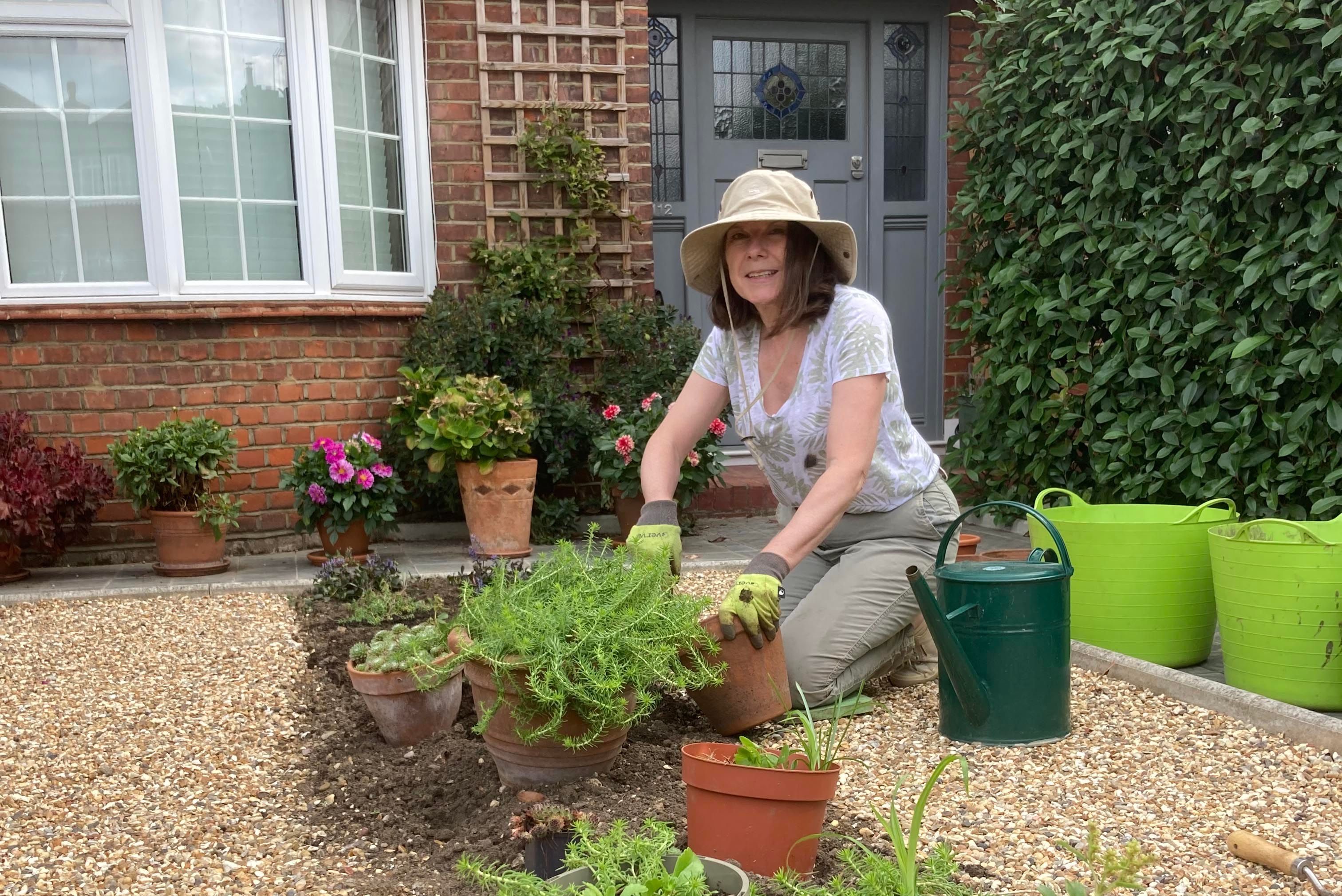
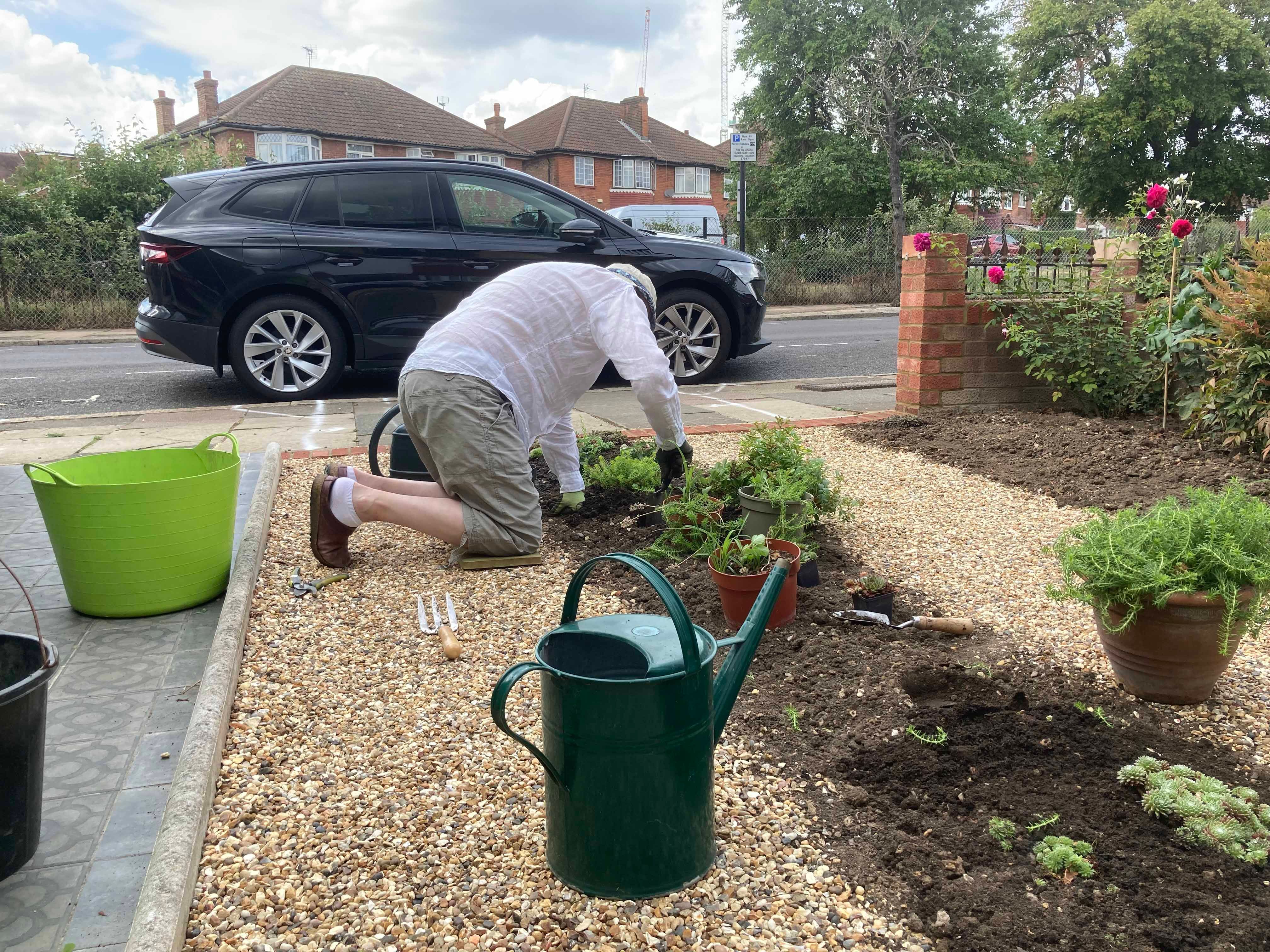
In the spring we had anemones poking out everywhere, which toned with the purple blue muscari and pink tulips in the lefthand border. In the future we will have seasonal planting; tulips in spring and dahlias in summer. The evergreen shrubs provide greenery all year round.
It has been a delight to open the shutters each morning to see birds flitting about on our driveway including robins, sparrows and wagtails. We often see bees buzzing about, too. Most importantly, we feel a sense of calm looking at it, which we wouldn’t have got with hard surfacing.
